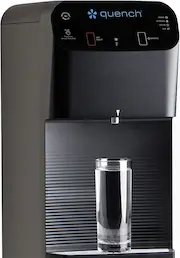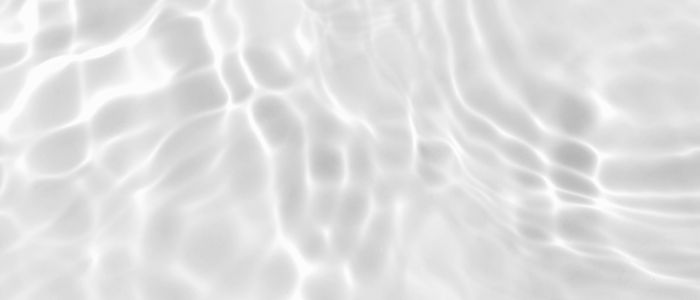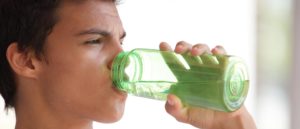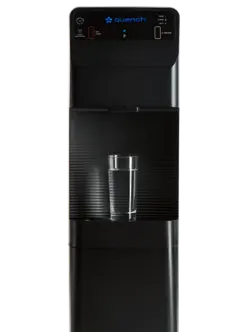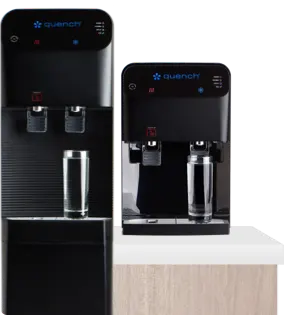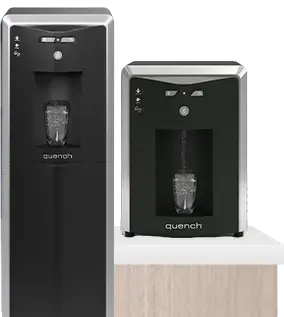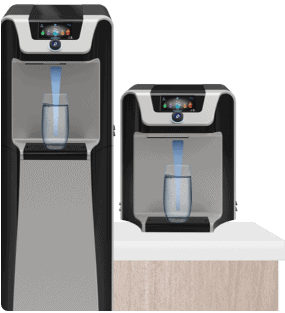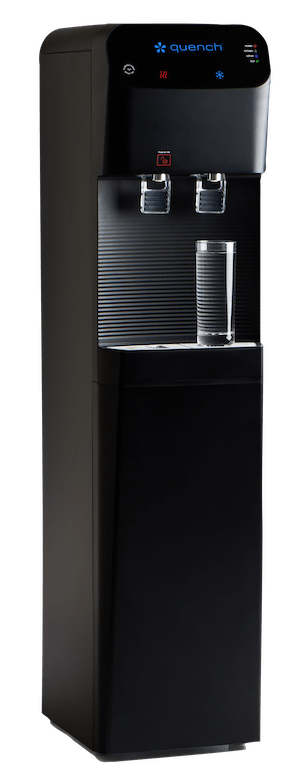Have you ever turned on your tap only to find your water looks white? It’s not uncommon, and there are a few reasons behind this phenomenon. And although white water is generally harmless, it can affect the taste of your supply — potentially impacting your long-term hydration.
Read on to learn how to differentiate between air bubbles, contamination, and more and what steps to take if your water remains cloudy. We’ll also explore beneficial solutions such as sediment filters and bottleless water coolers to guarantee fresh, crystal-clear water on demand — whether you’re at home or work.
What Causes My Water To Look White?
Three primary factors can cause water to appear white or cloudy: air bubbles, chlorine, and impurities.
1. Air bubbles
Excessive trapped air in your water pipes or main supply can result in white water. When you turn on a tap, the built-up pressure is released, causing air bubbles to form in the water — giving it a white appearance. This process, known as aeration, doesn’t pose a risk to the safety of your drinking water. If your water appears white, it should return to its normal clarity after a brief period.
2. High chlorine levels
High chlorine levels in water can often result from the disinfection process commonly employed during maintenance or repair work on water supply systems. Chlorine is also routinely added to water to eliminate bacteria and ensure its safety for consumption. However, excessive chlorine levels can lead to a distinct odor and taste; not to mention cause your water to appear cloudy or white. Monitoring chlorine levels in your water supply helps to maintain its quality and prevent potential issues with taste and appearance.
3. Non-harmful impurities
Impurities along the path leading to your household or workplace can contaminate your water supply. These impurities, originating from sources like nearby reservoirs or pipes, often find their way into the local tap water supply. While visually unappealing, impurities that cause your water to appear white are generally harmless.
How to identify the underlying cause
To distinguish between air bubbles, chlorine, and harmless contamination, fill a glass with water and allow it to settle for a few minutes. If the water turns white due to air bubbles, they will quickly rise to the surface. However, if the water remains white, it may indicate contamination by impurities such as rocks, stones, sand, or dirt.
Less Common Causes of White Water To Consider
- Plumbing issues: Corrosion or deterioration within your building’s plumbing may lead to sediment buildup, resulting in white water.
- Main supply repairs: Repairs or maintenance work on the main water supply system can temporarily disturb sediment, causing the water to appear cloudy.
- Water pressure fluctuations: Changes in water pressure within the main supply systems may agitate sediment, leading to temporary cloudiness.
- Hot water heaters: In hot water heaters, trapped air can be released more easily as the water warms up — giving it a white or milky appearance.
What Should You Do?
1. Check with your neighbors
First, check if others in your area are experiencing similar issues with cloudy water from their taps. If they are, it may indicate a problem with the main water supply rather than your residential plumbing. This can help you determine the scope of the issue and whether it’s localized to your property.
2. Consider professional assistance
If your neighbors have clear water, it’s a good idea to seek professional help. You can check by filling a glass with water and letting it settle for a few minutes. If the water remains cloudy, contact a certified plumber or your water supplier to report the problem and get expert advice on the next steps.
3. Install a filtration system
If a plumber or your water supplier confirms contamination, consider installing a sediment filter to remove particles from your water supply. In fact, there are several filtration options available, including activated carbon filtration, reverse osmosis, and more. This can help improve the clarity and quality of your water, providing peace of mind regarding its safety for consumption.
4. Stay hydrated
If you’re in the process of testing your water and waiting for it to become clear, it’s important to have access to clean drinking water in the interim. You can achieve this by filling a jug with fresh water daily and storing it in the fridge to maintain freshness and hydration. This ensures you always have a readily available source of drinking water until the problem with your tap water is fixed or a filtration system is installed.
Quench Your Thirst for Clarity With Advanced Filtration
To avoid cloudy water, consider Quench bottleless water coolers. Our advanced filtration technology ensures clear and delicious drinking water every time you use the tap. Ready to get started? Discover our product line or get a free estimate for a water cooler today.
